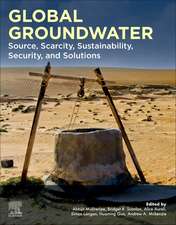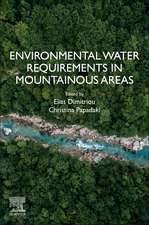Daily Energy Use and Carbon Emissions – Fundamentals and Applications for Students and Professionals
Autor BE Loganen Limba Engleză Hardback – 20 ian 2022
Preț: 601.32 lei
Preț vechi: 780.94 lei
-23% Nou
115.06€ • 120.14$ • 95.01£
Carte tipărită la comandă
Livrare economică 15-29 aprilie
Specificații
ISBN-10: 1119831016
Pagini: 288
Dimensiuni: 178 x 254 x 15 mm
Greutate: 0.73 kg
Editura: Wiley
Locul publicării:Hoboken, United States
Cuprins
Notă biografică
Bruce E. Logan, PhD, is the Evan Pugh University Professor in Engineering, the Stan & Flora Kappe Professor of Environmental Engineering, and Director of the Engineering Energy & Environmental Institute at Penn State University, USA. He is the author of Environmental Transport Processes and Microbial Fuel Cells, and has published more than 540 refereed publications.
Descriere
Provides an accessible and relatable approach for understanding how much energy we use in our day-to-day lives Daily Energy Use and Carbon Emissions enables readers to directly evaluate their energy use, estimate the resulting carbon emissions, and use the information to better appreciate and address the impact their activities have on climate change. Using quantities and terms rooted in everyday life, this easy-to-understand textbook helps readers determine the energy they consume driving a car, preparing a meal, charging electronic devices, heating and cooling a house or apartment, and more. Throughout the text, clear explanations, accurate information, and numerous real-world examples help readers to answer key energy questions such as: How much energy does your house use in a month? What impact will turning off lightbulbs in your home have on energy conservation? Which car emits more CO2 into the atmosphere per mile, a 50 MPG gasoline car or a 100 MPG equivalent electric car? Demonstrating the relation between daily energy use, carbon emissions, and everyday activities in a new way, this innovative textbook: * Examines daily activities within the context of the basic needs: energy, food, air, and water * Covers topics such as daily water use, renewable energy, water and energy sources, transportation, concrete and steel, and carbon capture and storage * Includes discussion of energy and CO2 emissions relative to infrastructure and population growth * Provides supplemental teaching material including PowerPoint slides, illustrative examples, homework assignments, discussion questions, and classroom quizzes with answers Daily Energy Use and Carbon Emissions: Fundamentals and Applications for Students and Professionals is a perfect textbook for students and instructors in Environmental Engineering programs, and an essential read for those pursuing careers in areas related to energy, environment, and climate change.























